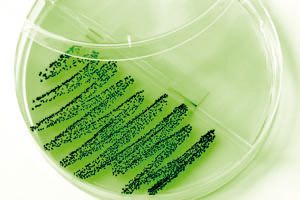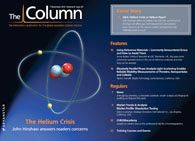Fighting bacterial resistance
Antibiotics are used frequently and there has been a corresponding growth in antibiotic-resistant bacterial strains, such as MRSA (multi resistant strain antibiotics). This resistance is placing pressure on healthcare systems worldwide with numerous government agencies, including the World Health Organization (WHO), campaigning to reduce the use of antibiotics. There is now an emerging research focus on the development of plant-based anti-microbial agents that could be used for non-medicinal purposes; specifically of interest is the use of antimicrobials in the preservation of foodstuffs.

Antibiotics are used frequently and there has been a corresponding growth in antibiotic-resistant bacterial strains, such as MRSA (multi resistant strain antibiotics). This resistance is placing pressure on healthcare systems worldwide with numerous government agencies, including the World Health Organization (WHO), campaigning to reduce the use of antibiotics. There is now an emerging research focus on the development of plant-based anti‑microbial agents that could be used for non-medicinal purposes; specifically of interest is the use of antimicrobials in the preservation of foodstuffs.
Antibiotics are often added to food as a method of preservation to reduce the rates of food‑spoiling, which, when considering the world’s rapidly expanding population and increasing occurrences of food-shortages, seems logical and important. However, the increasing occurrence of antibiotic‑resistant bacterial strains that were once managed with a simple course of antibiotics are now becoming unmanageable.
The Centre for Disease Control (Atlanta, USA) states on their website 1 that antibiotic resistance is now considered one of the world’s most pressing health problems. Scientists are now being called upon to identify novel plant-based anti-microbial agents to limit the unnecessary commercial use of antibiotics.
A group of scientists in Italy2 has identified one such potential candidate for use in food preservation – a commonly used chocolate substitute: carob tree leaves.
The carob tree (Ceratonia siliqua) is found growing in Mediterranean regions, and is used in a wide range of industries, including the production of cosmetics and textiles to traditional Turkish medicine. The scientists isolated the methanolic extract of Carob leaves and tested the ability of the extract to inhibit growth of the food-borne pathogen: Listeria monocytogenes. The extract had a bacteriostatic effect on L. monocytogenes; that is, it halted the growth of the bacterium. To further explore the reasons behind this effect, high performance liquid chromatography (HPLC) was utilized to identify the key components contained within the extract. The main active compounds identified were gallic acid, (−)-epigallocatechin-3-gallate, myricitrin, isoquercitin, catechin, chlorogenic acid and malic acid.
The identification of this novel function of carob leaf extracts may prove to be of high commercial value if developed further for the purposes of food preservation.
1. Centre for Disease Control, (Accessed October 2012: http://www.cdc.gov/getsmart/antibiotic-use/fast-facts.html#b)
2. N. Aissani et al, Journal of Agricultural and FoodChemistry,60, 9954–9958 (2012).
This story originally appeared in The Column. Click here to view that issue.

A Novel LC–QTOF-MS DIA Method for Pesticide Quantification and Screening in Agricultural Waters
May 8th 2025Scientists from the University of Santiago de Compostela developed a liquid chromatography quadrupole time-of-flight mass spectrometry (LC–QTOF-MS) operated in data-independent acquisition (DIA) mode for pesticide quantification in agriculturally impacted waters.
Investigating 3D-Printable Stationary Phases in Liquid Chromatography
May 7th 20253D printing technology has potential in chromatography, but a major challenge is developing materials with both high porosity and robust mechanical properties. Recently, scientists compared the separation performances of eight different 3D printable stationary phases.

.png&w=3840&q=75)

.png&w=3840&q=75)



.png&w=3840&q=75)



.png&w=3840&q=75)









